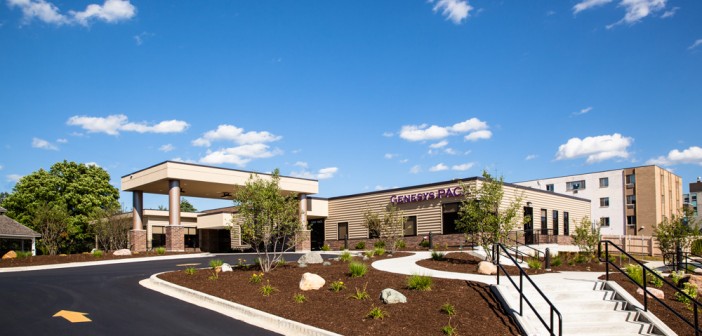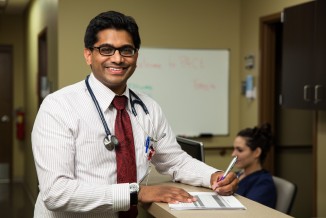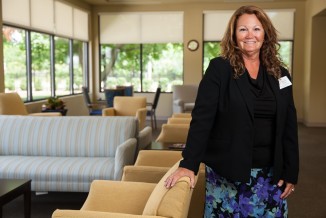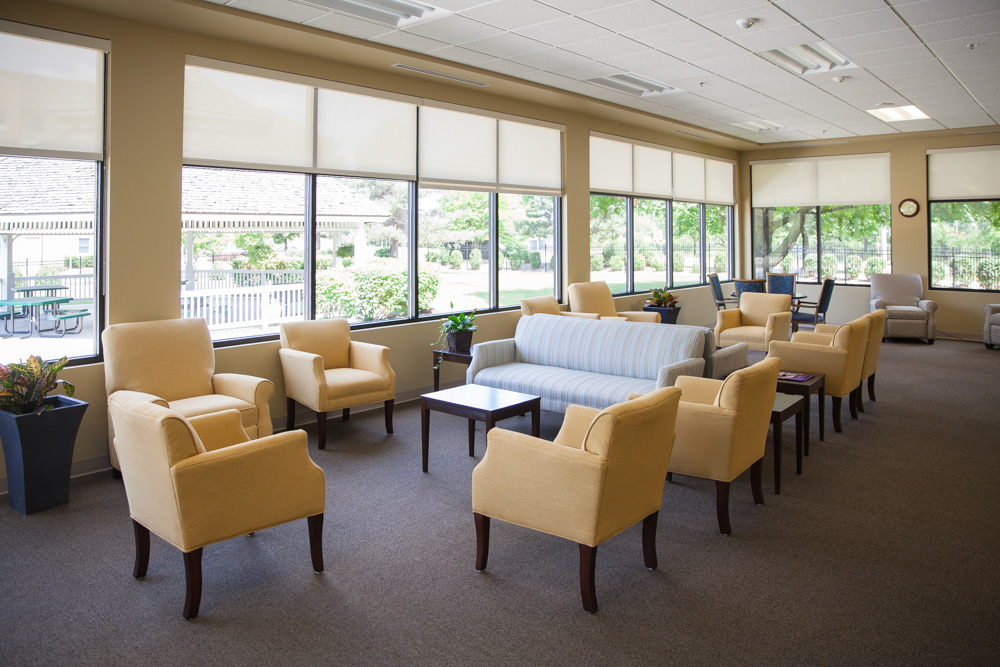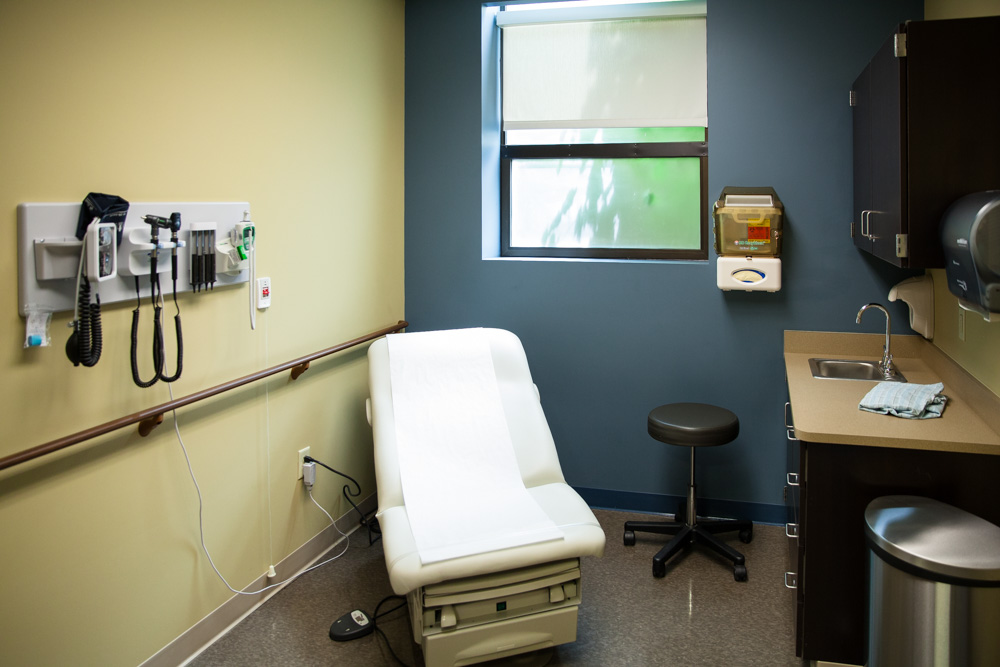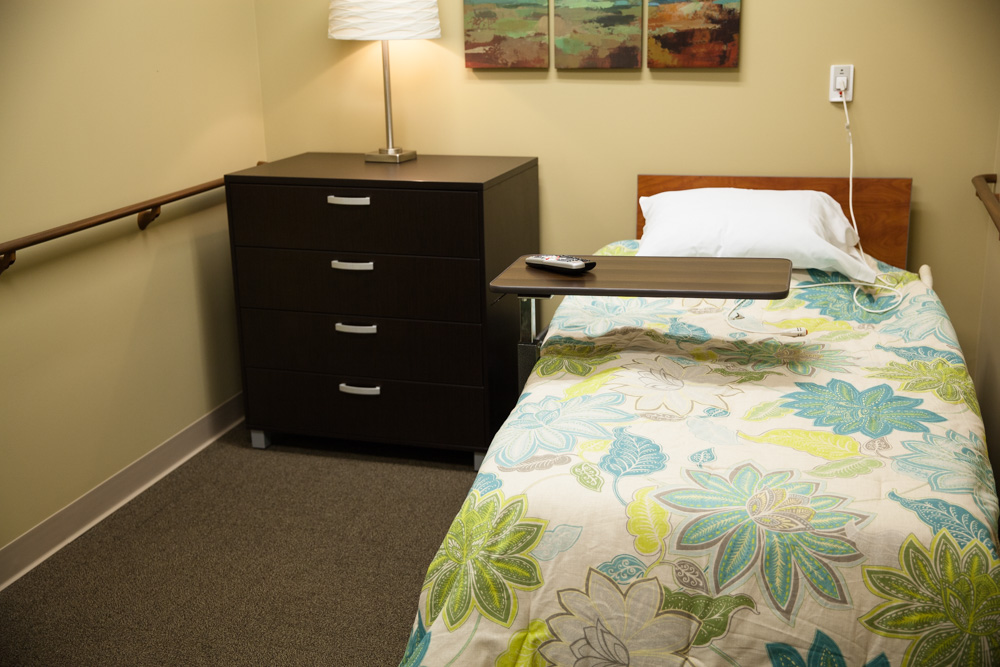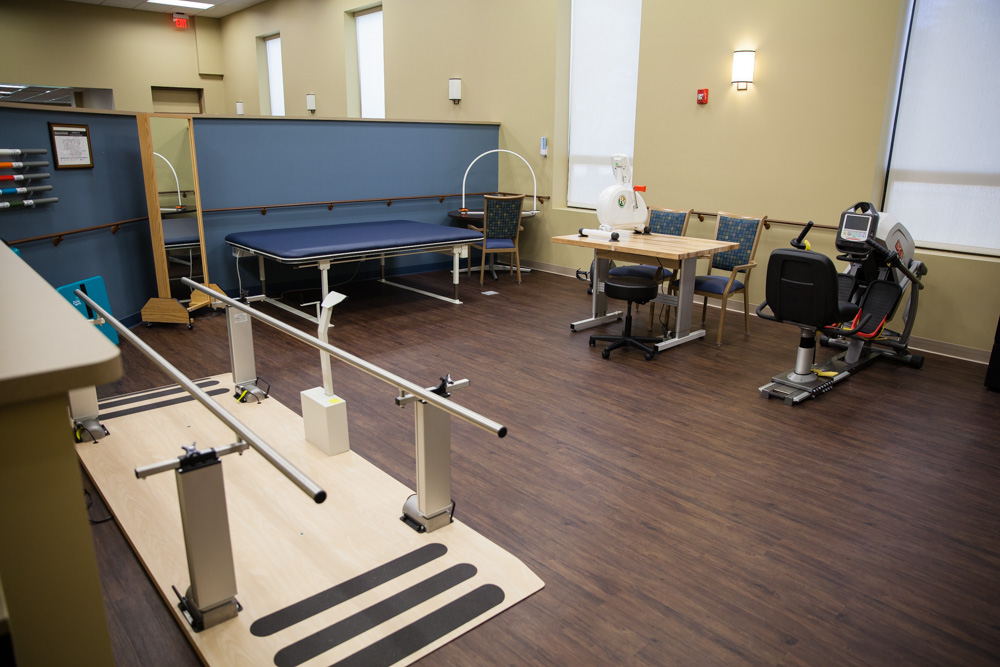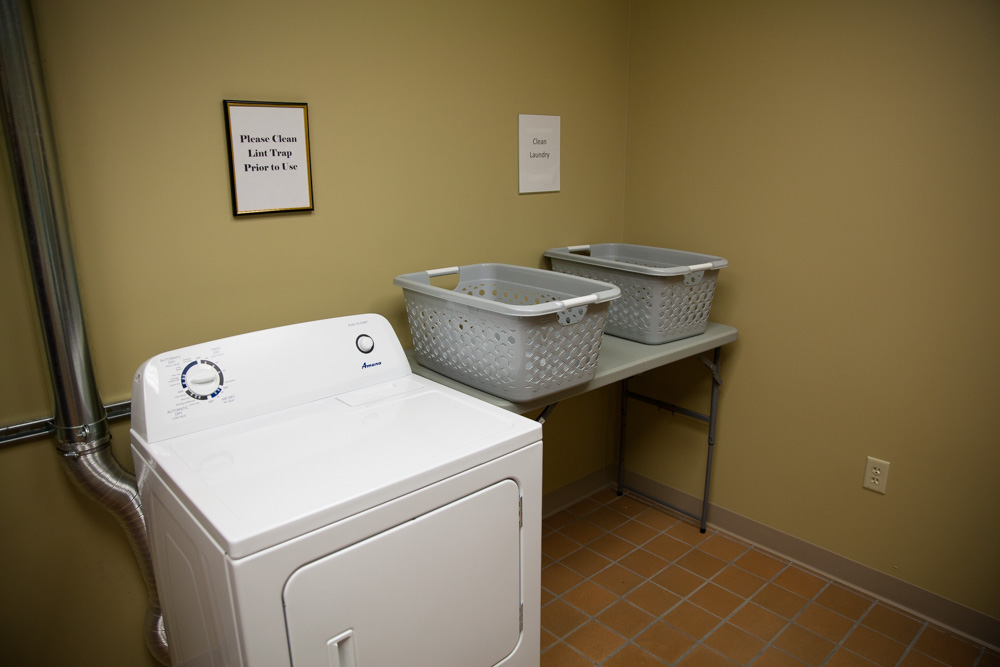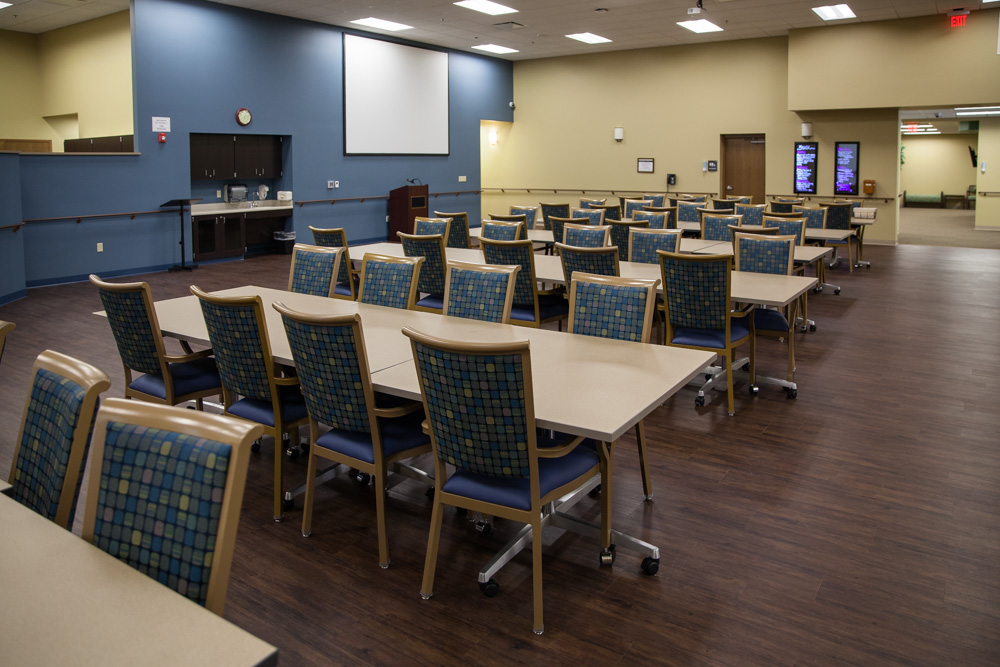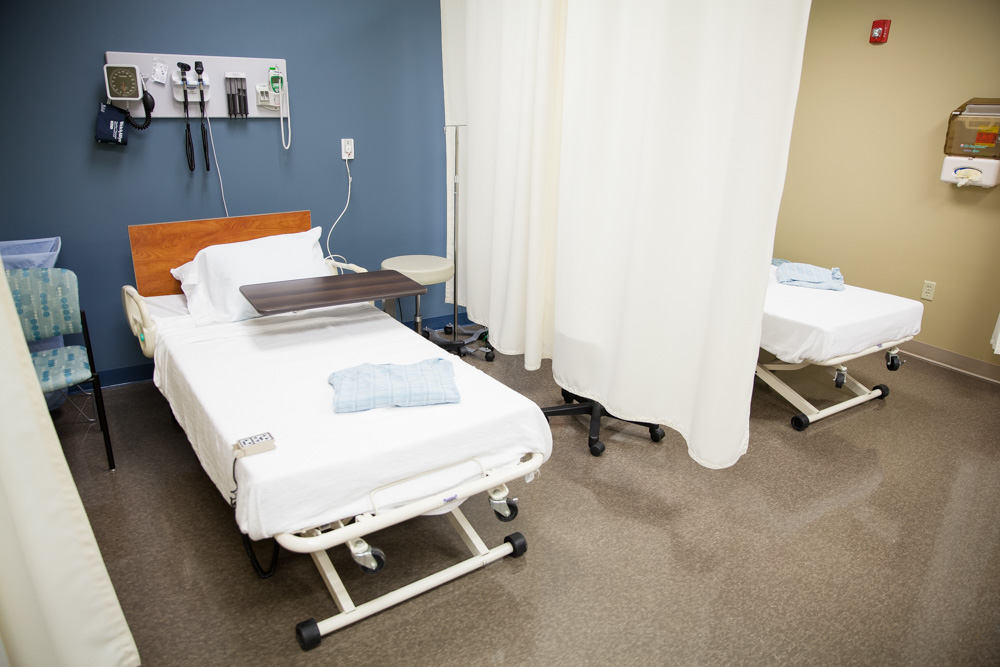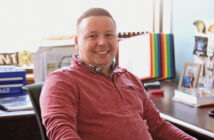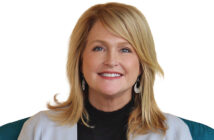The new Genesys PACE facility is now open, having accepted its first three participants on August 1. Annette Sivertson, Executive Director, and Dr. Amol Ekhande, Medical Director, took My City Magazine on a tour of the new facility.
Subbing the word “participant” for “patient,” PACE is exclusively “participant-focused,” concentrating on their goals, wishes, and keeping them in their homes – and out of the hospital – as long as possible. With a constant re-evaluation of participants’ goals, there are frequent follow-ups and check-ins to ensure the highest level of care possible.
The new PACE facility in downtown Flint is the exclusive provider for Genesee County. There are 114 facilities nationwide, with nine, including Genesys, in Michigan. The facility is “not just a place,” Dr. Ekhande claims, “it’s also an idea.”
PACE is the acronym for “Program of All-Inclusive Care for the Elderly.” Although the facility is open 8am to 4:30pm, Monday through Friday, participants can be cared for in their homes 24 hours a day, seven days a week, every day of the year. PACE provides home-delivered meals and other home care, and private-duty nurse aids to help with bathing and dressing or small chores around the home. The home care liaison helps determine how much assistance is needed outside of the facility based on participants’ abilities with Activities of Daily Living (ADL). Participants can receive as many hours as necessary of home assistance per month. According to Sivertson, the number of full-time nurses on the staff will increase as they approach max capacity. PACE’s goal is to accept ten participants a month until they reach max capacity of 225 participants – which they are projecting will take about 22 months. At that time, they are expecting 130 participants on a daily basis.
Emphasizing interdisciplinary teamwork, PACE provides a consistent, proactive plan of what is best for the participant. PACE physicians and other service providers are not trained differently outside of their field or area of expertise; the main difference is the constant level of communication between each service. All of a participants’ primary and secondary care doctors, dieticians, therapists, social workers, and family members work and communicate with each other to provide the best quality of care. Throughout a regular day at PACE, CNA’s help assist participants, depending on their level of need.
Working with dual-eligible Medicare and Medicaid participants, participants usually have no co-pay or out-of-pocket fees. Their program is a comprehensive solution to solving a problem, rather than simply passing off responsibilities to another service, or supplying a participant with an ineffective prescription. Every possibility is observed from different angles to keep on top of symptoms. In addition, each service group does a formal assessment of each participant. Decisions are made as a group, not individually.
A unique quality about PACE is that a participant can live at home, while spending their days at the facility, almost like a job or school that the participants can look forward to attending. Participants are taken to and from medical appointments on a bus with wheelchair accessibility. Aids ride along, and the drivers are also trained to be aware of a participant’s situation, and possibly notice when they need assistance. Dr. Ekhande emphasizes how important the driver can be to a participant with regard to familiarity, and building a trusting, intimate relationship. Dr. Ekhande believes it achieves a certain “comfort level.”
The building itself has large, open spaces in the main lobby and hallways, quiet rooms for naps or down-time, an outdoor gazebo, a cafeteria that also passes as an activity hall, with a projector screen for movies and Nintendo Wii video games, “to help with coordination,” says Dr. Ekhande. Of course, arts & crafts and board games are included as part of recreational therapy. Sivertson mentioned one participant was even asked to design the bingo cards for the activity hall.
This program focuses equally on participants’ mental health, as well as physical health. Once at full capacity, there will be six social workers on staff. “Not only are they there to help our participants, but they’re also there to service the family, especially when a hospice decision may need to be made,” Sivertson says.
To assist with mental and emotional health, recreational therapists can develop a plan based on a participant’s likes and dislikes. PACE also has a sun room – Sivertson’s favorite. Her background is in nursing home care. She explains: “The patients at the nursing home would always flock to the windows to see what’s going on outside. I envision this room being pretty full.” Although PACE is a fantastic facility on its own, its “fun” aspect is what makes it special. Mental health is just as important as physical, and the fun, seemingly secondary methods of care, contribute to a participants’ emotional well-being.
All medical equipment is provided, including an ambulance that could go to and from the ER and hospital if needed. Dr. Ekhande shares that there is still some communication methods they are working out with the ER. They’re not avoiding hospitalization, but they provide the same services, including a crash cart, EKGs, and a floor stock of common medications. “By starting here,” Dr. Ekhande says. “We waste no time.” If a participant does need to be hospitalized, Sivertson contributes, “Sometimes it is not appropriate to go into the hospital for a short stay, but symptoms might be out of control and require 24-hour care. In that case, we contract with local nursing homes for short-term admission.”
The urgent care clinic is one of the many aspects of PACE. There are two “urgent care” beds, set up similar to an ER. During open hours, participants can use the clinic for check-ups or for urgent care. After hours, if participants need urgent care, they call a physician, like Dr. Ekhande, for intervention and the physician would tell the participant what they should do.
Medical records are easily accessible by all services, as well as emergency care plans individualized to each participant. Though these emergency care plans are specific to an individual, the overall process of dealing with emergencies is standardized for continuity of care. The care plans includes instructions, “go to the ER if …” so participants know what to do in case of an emergency.
Within the next 22 months, Sivertson and Dr. Ekhande hope to make the process of working with the ER more smooth, efficient, and cost effective. Part of their quality assessment is to track ER use, frequency, and accuracy of communication. “It’s exciting because we get to have open eyes and ears and improve anything we want,” Dr. Ekhande says. “If we ever reach a point where we say everything is perfect, then we’re not doing it right.”
The interdisciplinary team concept is PACE’s “secret sauce” for its success. “Our goal is for elderly people to remain active and healthy in their community and their own home while sustaining the highest quality of life and the highest level of care,” Dr. Ekhande explains. “It’s different than geriatrics clinics or family clinics, because we have different inputs and ideas.” For example, a participant dealing with depression can be treated by a physician like Dr. Ekhande who can work with the physical and medical aspects of the depression, while a social worker can involve the participant in more social activities, following the participant’s goal of overcoming their depression. “We look at the same problem from multiple angles,” says Dr. Ekhande. “We combine our strengths to solve a problem, instead of the traditional 15- or 20-minute doctor’s visit, and with this model, we keep on top of the symptoms.”
A component of PACE is working with the Advanced Care Initiative currently going on in Genesee County, in which all participants are making well-informed end-of-life decisions, with follow-up by their physicians. “That is something we encourage and will continue to follow up with the families and their loved ones and make sure that those decisions are made in advance,” Sivertson says. “It’s a continued discussion,” Dr. Ekhande adds, “We’re not taking away hope; we just want them to be prepared and find what makes them happy.”
Those who utilize the PACE services are in good hands – every employee has at least one year of experience working with the geriatric population. Sivertson says that the qualities PACE looks for in their staff include a sense of joy in working with elderly people. Dr. Ekhande is most proud of the very compassionate and connected team.
“I am most proud of the services we are able to provide for the elders of Genesee County,” Sivertson says. Up to 5,400 are eligible for this program. “A large number of people who would be eligible for this program have the ability to stay in their own homes and enjoy the community, go to church and be with loved ones, as opposed to life in a nursing home, which can sometimes be isolating.”
Another idea still in its infancy is to create the same model of care for those younger than 55, “because this model has been so successful,” according to Sivertson. An example of a fitting candidate is a parent who needs help caring for a child with special needs. “This kind of program could really impact their lives,” Sivertson says.
PACE certainly seems well-equipped to take care of the 55-and-over community. As the program grows, the team will evaluate whether they are in the position to build another facility to accommodate Genesee County’s growing aging population.

